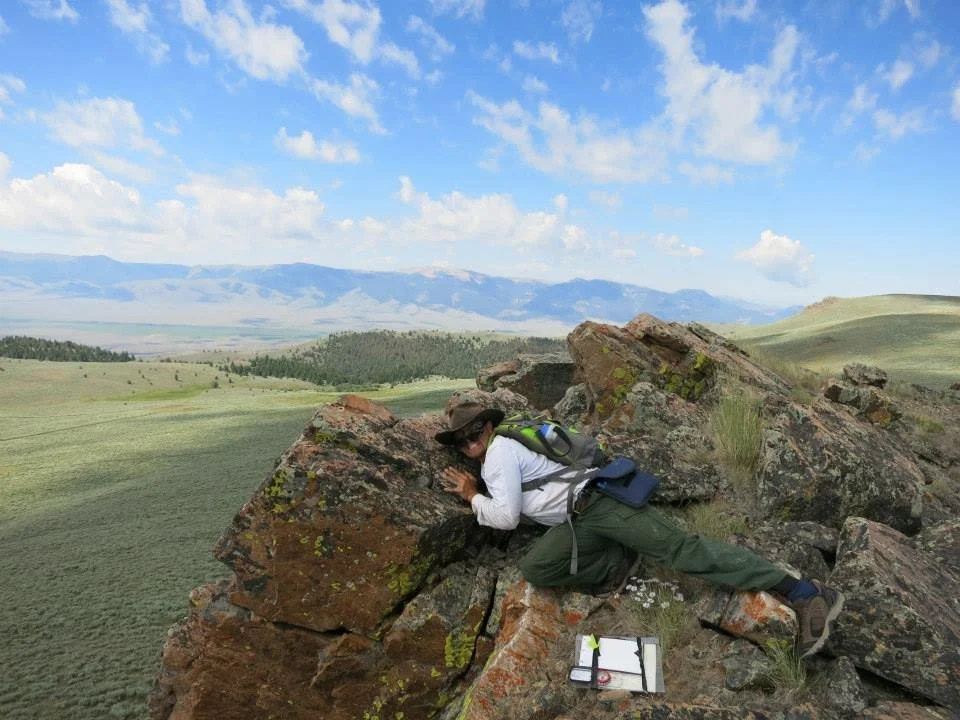How we got into Farming
The short answer is we each have about five years of experience spread out over 15 years.
We first caught the farming bug while attending Northland College. There was a blossoming local foods movement happening in the local area and a few of our professors were vocal advocates. We were inspired by the words of Wendel Berry, permaculture design principles, and time spent volunteering at Great Oak Farm and Elsewhere Farm. Full of spring energy, we went and got internships in northern Minnesota.
There we learned the most important lesson – how not to farm. We spent a summer doing grunt work in the most inefficient ways possible. The five-gallon bucket is a modern marvel suitable for many tasks; watering a quarter-acre of produce is not one of them. Farms take planning and significant investments of time and money: Without knowledge and preparation, you are stuck fighting losing battles.
This was us in college! A couple months after we got hitched.
With hard-won lessons in hand, we began volunteering with the Northland College Mino Aki Gardens and we eventually were hired on to run the gardens for a season. We managed an eighth-acre market garden, a 20-plot community garden, and several dozen native landscape gardens around the campus. Our seeds sprouted, our gardens flourished, and students were fed.
Around this time, we made our ten-year plan. We were going to spend years WOOFing. Touring farms across the country, learning the best systems and practices firsthand. We had it all figured out with the naïve certainty only a couple of twenty-somethings can possess.
Drew on the rocks.
That didn’t happen. Life happened. Grad school, surgeries, injuries, illnesses, and student debt made us think that a farm wasn’t in the cards. But we stayed connected to the sustainable ag community as buyers and volunteers on our friends’ farms, and Allison as a radio and print journalist covering ag and natural resource issues in Montana. We then moved to the Keweenaw in 2014. We bought our first house in Hancock and ripped up the front lawn to plant asparagus and a berry patch. Our neighbor told us, “You seem like you could use more space.” Which we did – and in 2019 we bought a house out of town with 20 acres.
Cue Spring 2020: The pandemic started up and we took the most reasonable next step. Panic buy 25 pounds of rice? Of course not, we had been buying in bulk for years. No, we panic tilled an eighth-acre of meadow and gleefully planted 25 pounds of seed potatoes and other storage crops. Decrepit sauna with dandelions growing out of the roof in the front yard? Sure would make a great chicken coop.
The front lawn pre-holes with no chicken run, pond, or flowers. Also, the Era of Ilya and Jasper, a lovely and distinctly feral part of our lives.
The farm dream had come back to us! At the same time, there was another invisible factor at play. Drew has Meniere’s disease, an inner-ear disease with no known cause and no known cure that produces unpredictable vertigo, tinnitus, and hearing loss. It had been in remission since 2014. Drew had been running a business installing solar panels since 2015, but late in 2019 his symptoms returned. If there are two things more immiscible than oil and water, it is random vertigo attacks and working on roofs. When one business closes, another business opens.
So, the early pandemic homestead planted the seed that sprouted into Ghost House Farm in 2021. The garden was shifted to space-efficient crops for selling to neighbors and friends. We got an EQIP grant for a 30’x80’ high tunnel. We raised and sold 10 heritage-breed, pasture pigs. The goats began the Sisyphean task of reclaiming 10 acres of former fields from decades of tag alder and buckthorn.
And that (more or less) brings us here.
If you want to keep up with our journey, sign up for our newsletter below and follow us on Instagram @ghosthouse.farm



